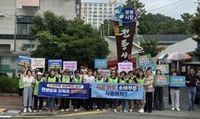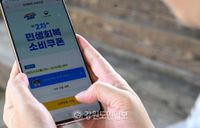On September 22, 2025, South Korea embarked on its second round of the ambitious "birth gift coupon" program, a nationwide initiative designed to ease the financial burden of childbirth and invigorate local economies. The Ministry of Interior and Safety officially opened applications at 9 a.m., signaling the start of a six-week window for eligible citizens to claim their share of the support. With a budget of 100 million won allocated per person, the program aims to cover up to 90% of childbirth-related expenses for qualifying households.
The application period, which runs until October 31, 2025, has been carefully orchestrated to maximize accessibility and minimize administrative headaches. Applicants can submit their requests both online and offline, utilizing a variety of platforms: from the websites and apps of nine major card companies—such as KB Kookmin Card, NH Nonghyup Card, and Samsung Card—to local resident centers, banks, and even public institutions. For those less comfortable with digital tools, simply presenting an ID at a community center suffices, eliminating the need for lengthy paperwork.
But what exactly is the "birth gift coupon"? At its core, it’s a government-backed voucher worth 100,000 won per eligible individual, intended for use at local businesses and stores. The idea is twofold: provide direct, tangible support to families welcoming a new child, and simultaneously inject spending into small and medium-sized enterprises, many of which are still recovering from economic slowdowns.
According to data released by the Ministry of Interior and Safety, the coupon can be used until November 30, 2025. Any unused balance after this date will vanish—automatically canceled, with no extensions or rollovers. The government has been clear about this point, urging recipients to spend their coupons promptly to maximize the intended economic boost.
In an effort to ensure fairness and avoid system overload, the first week of applications (September 22-26) operates under a "day-of-the-week" system, based on the last digit of the applicant’s year of birth. This approach, first tested during the initial round of the program earlier in June 2025, is intended to prevent long lines and server crashes. Local governments have the flexibility to extend this system beyond the first week if necessary, particularly in regions with higher demand or limited resources.
Eligibility is broad but not universal: the program targets the bottom 90% of income earners, as determined by June 2025 health insurance contributions and household asset and financial income criteria. This means the vast majority of new parents—though not the wealthiest—stand to benefit.
On the first day alone, the numbers told a story of both enthusiasm and regional disparity. In Gangwon Province, out of 1,416,723 eligible households, 307,144 had already applied by noon, representing a robust 21.7% participation rate. The highest local application rate was recorded in Hwacheon County at 27.8%, with other strong showings in Wonju, Yanggu, Gangneung, and Chuncheon. These figures hint at the program’s potential to spur immediate local spending, especially in the so-called "BIG3" cities—Chuncheon, Wonju, and Gangneung—as well as in smaller markets like Hwacheon and Yanggu.
Yet, not all regions kept pace. Areas like Goseong, Hoengseong, Inje, and Pyeongchang lagged behind with lower application rates, some as low as 16.4%. Local authorities have identified these gaps and are ramping up efforts to reach elderly residents and others who may be less familiar with the process, offering tailored support and increasing promotional activities at partner stores.
Elsewhere, Jeju Province reported the lowest application rate nationwide on day one, with just 12.29% of its 604,838 eligible residents submitting requests. This figure fell short of the national average of 14.02%, according to the Ministry’s daily tally. In contrast, Sejong City led the pack with a 14.81% application rate. When it comes to preferred payment methods, the vast majority opted for credit or debit cards, followed by local gift cards and a handful of paper vouchers.
For Anseong City, the rollout included special measures to ensure inclusivity. The city deployed a "visiting coupon application service" at senior and disability welfare facilities, village halls, and community centers, aiming to eliminate blind spots and make the process as smooth as possible for vulnerable populations. Recipients can choose to receive their coupons via credit/debit cards, prepaid cards, or the local Anseong Sarang Card. Notably, coupons loaded onto the Anseong Sarang Card are accepted at all affiliated merchants citywide, while those on credit, debit, or prepaid cards can be used at small businesses with annual sales below 3 billion won.
From this second round onward, even some rural Hanaro Marts are included as eligible vendors, expanding opportunities for residents in outlying areas to participate in the local economy. The city plans to host community meetings to gather feedback and ensure the program operates smoothly, with a particular focus on supporting small merchants and stabilizing household finances.
Transparency and security are also front and center. The city of Anseong has warned residents to be wary of scam texts containing suspicious links, reminding everyone that no official communication will include URLs. The government, for its part, has set up dedicated hotlines—ranging from the national 110 call center to the birth gift coupon support line (1670-2525)—to answer questions and address concerns. Disputes over eligibility can be handled online through the National Petition Portal or in person at local administrative offices, with the same "day-of-the-week" system applying to these appeals.
In a statement, Kim Bora, the mayor of Anseong, emphasized the broader goals of the initiative: "We will do our best to accelerate the recovery of the local economy through the second round of consumption coupons and ensure that citizens can enjoy real benefits. We ask everyone to participate by applying and using the coupons within the period, so we can help restore small business sales and stabilize household finances together."
Yoon Ho-jung, Minister of the Interior and Safety, echoed this sentiment, noting, "The second round of consumption coupons has been designed to improve public convenience by simplifying application procedures and expanding usage options. We urge citizens to apply by October 31 and use the coupons quickly by November 30."
As the program unfolds, the hope is that these targeted subsidies will not only cushion the financial blow of welcoming a new family member but also spark a ripple of renewed spending across local economies—bridging the gap between policy and everyday life in communities nationwide.

